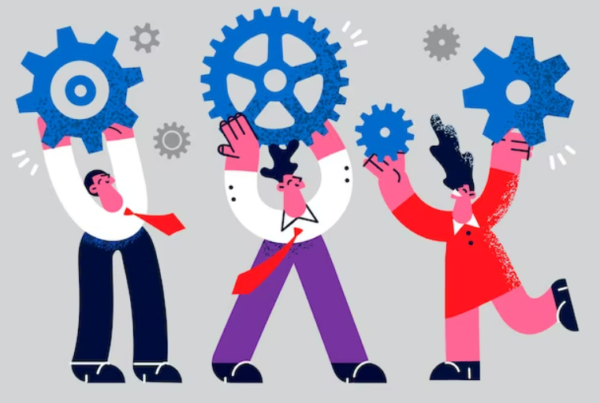All high-performance teams, whether they are elite special operations groups, winning professional sports teams, or well-functioning business organizations, have comparable characteristics. They have strong internal trust and accountability, are better at navigating change, and have resilient mindsets. They are more long-term, have higher levels of engagement, and hence are more productive. High-performance businesses have a clear goal story, higher levels of employee and customer happiness and retention, faster (and more intelligent) growth, and higher profitability.
15 qualities of high-performance teams:
1. Servant Leadership: The organization is committed to a leadership philosophy in which the leader’s primary aim is to serve. They stay focused on achieving their objectives while remaining modest and putting the team’s needs ahead of their own.
2. Shared Vision: Everyone on the team believes in and supports a common goal that the group is working toward. Team members are laser-focused on their goals. They are emotionally invested in the story of the endeavor.
3. Time-Conscious: The team works to meet particular deadlines in order to achieve results. The use of SMART goals has become the norm.
4. Accountability Culture: The company not only talks about accountability, but also has frameworks in place that link experiences, beliefs, and actions to desired business outcomes.
5. Consistent Communication: Everyone goes above and beyond to ensure that the strategy – and progress toward the plan – is well understood. The right tools are used. Through formal and informal means for sharing information across the organization, leaders and managers engage in intentional storytelling.
6. Comfort Zone Expansion: The team’s effort takes them outside of their comfort zone. They take calculated chances and are always asking themselves, “What if?” Adversity is welcomed and embraced by the team. When challenges arise, the company has contingency plans in place and is more robust.
7. Ecosystems, Not Hierarchies: High-performing teams embrace a decentralized approach to leadership and decision-making. While the planning process is usually centralized and focuses on big-picture goals, task and duty execution is frequently decentralized. The chain of command is being pushed down.
8. Proper Planning: For planning and execution, the team has established proper processes and SOPs (standard operating procedures). They enlist the input and participation of all members of the appropriate team in the planning process. Every single person’s voice is heard.
9. After Action Reviews: The team takes a break at regular intervals to assess the quality of its recent work in order to determine how the process can be improved and what lessons can be shared with other members. The after-action evaluation procedure is carried out on a regular basis, and the results are kept in a center of excellence.
10. Extensive Participation: Members work hard to ensure that everyone is included. Participation is fueled by engagement. There are very few (if any) team members who are actively disengaged (working against the team).
11. Self-Managed: Team leadership shifts depending on the level of competence needed. As flaws or gaps are uncovered, team members jump into the breach.
12. Trust is Measured: The team recognizes that trust influences productivity, engagement, and profitability. Integrity, honesty, and transparency (at the proper times and in the appropriate environment) are required behavioral norms in the organization.
13. Guiding Principles: The team follows a set of well-defined guiding principles that govern their behavior and communication. The organization’s “way” includes the usage of a common language. Talent acquisition, promotion initiatives, and incentive methods are all guided by guiding principles.
14. Celebrates Success: High-performing teams rejoice in tiny successes on their way to achieving their goals. Members of the team work together to improve one another. They are really concerned about one other’s professional and personal progress.
15. Learning Culture: Through continuous learning and development, the organization strives for excellence. They never seem to be content with the status quo.
Now that you’ve learned the traits, you’ll be able to see where your team excels and where it might improve. So get to work! if you need help check out our Team Development programs.




